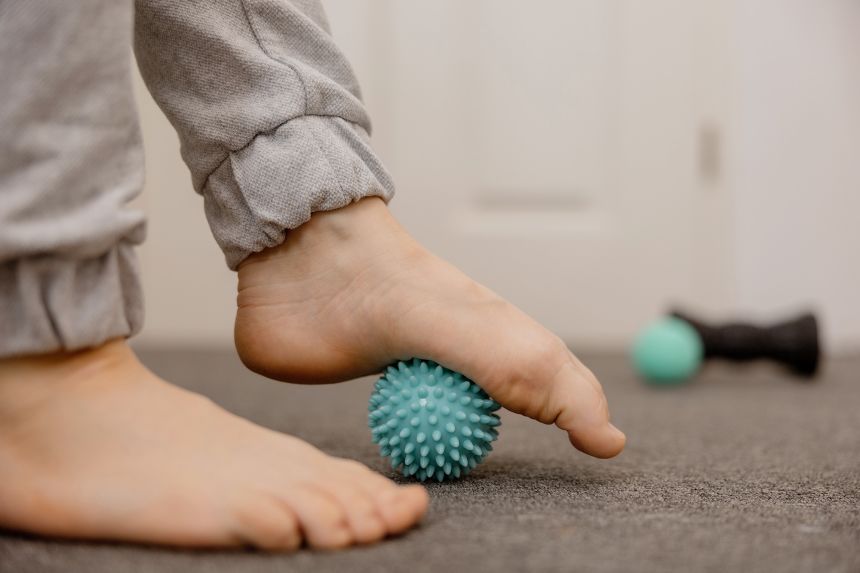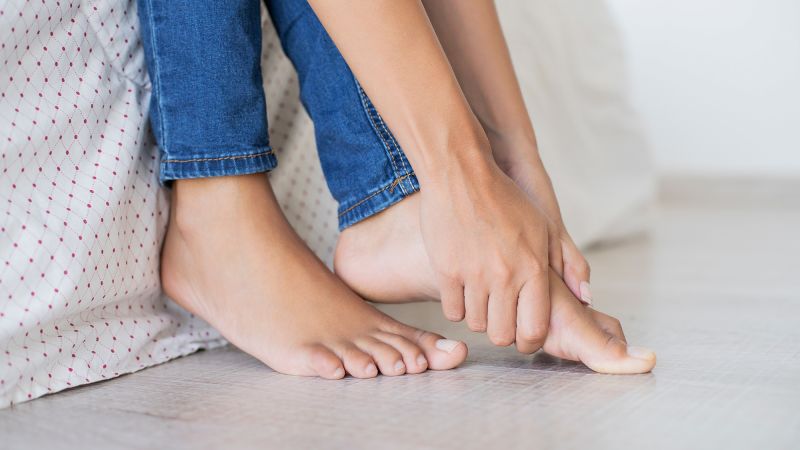Dana Santas, known as the “Mobility Maker,” is a certified strength and conditioning specialist and mind-body coach in professional sports, and is the author of the book “Practical Solutions for Back Pain Relief.”
Whether you’re taking a morning walk or chasing after a little one, your feet bear your body weight with every step you take. Yet they are often one of the most neglected aspects of any fitness routine. Like any other part of your body, your feet respond to training. Overlooking them can have far-reaching consequences.
Your feet are your body’s foundation, so when they lack strength, mobility or stability, it creates ripple effects up through the muscles and joints of the rest of your body.
Poor foot function not only contributes to inflammatory conditions such as plantar fasciitis and Achilles tendinopathy but also to ankle problems, knee pain, hip tightness and even low back strain.
Understanding how to care for your feet isn’t just about preventing foot pain — it’s about supporting your entire body’s movement potential.
Your feet are remarkable structures containing 26 bones, 33 joints, and more than 100 muscles, tendons and ligaments. This complex architecture allows your feet to adapt to various surfaces while providing the strength and mobility needed for stability and propulsion.
The foot’s arch system acts like a natural shock absorber and spring. When functioning properly, your arches compress slightly upon impact to absorb force, then recoil to help propel you forward. Your toes also play a crucial role, providing balance, grip and the final push-off during each step.
How your feet function directly influences everything above them. Your ankles, knees, hips and spine all depend on proper foot mechanics for optimal alignment and movement. When your feet can’t do their job effectively, other parts of your body compensate, often leading to overuse injuries and pain.
“You could really generalize it as causing postural fatigue,” said Dr. Emily Splichal, a functional podiatrist in Chandler, Arizona. “When your feet aren’t working optimally, people just can’t stand as long as they used to or move as they would like to. Their foot fatigue limits their ability to do certain activities, like hikes or even walking the dog.”

Try these simple assessments to evaluate your foot strength and mobility.
Toe spread test: While seated, try to spread your toes apart without lifting them off the ground. If your toes barely move or curl under, you may have limited toe mobility.
Arch control assessment: Stand with your feet hip-width apart. Try to lift your arches while keeping your toes and heels on the ground. If you can’t create a visible arch lift, your intrinsic foot muscles may be weak.
Calf-raise quality: Perform 20 single-leg calf raises. Place your hands on a wall or the back of a chair for stability, and stand with your feet hip-width apart. Bend your left leg to lift it off the floor, and then raise and lower your right heel while keeping your right leg straight. If you experience foot cramping, ankle wobbling or can’t complete the set, it suggests weakness in your foot and ankle complex.
These tests aren’t diagnostic tools, but they can highlight areas that need attention.
Editor’s note: Splichal advises seeking professional help if you experience pain that is persistent and not resolved through exercise and rest.

To strengthen your feet, Splichal suggests a simple three-exercise routine that takes just minutes to complete:
1. The forward lean exercise helps activate your foot muscles and improve stability. Stand tall and stiff as a board, spread your toes wide, then lean your body forward slightly. As you lean, your toes will naturally grip into the ground, activating the muscles that stabilize your posture and strengthen your feet. Lean, pause and return to the start. Repeat for five repetitions on each side.
2. The short foot exercise targets the arch-supporting muscles through conscious toe activation. While standing in a split-stance position, focus on spreading and gripping the ground with the toes of your front foot. Splichal integrates this exercise with breathing: “Every time your toes push into the ground, focus on exhaling through your nose. Inhale to relax.” Practice this through five breaths on each side.
3. The single-leg balance challenge combines foot strengthening with functional stability. After performing the first two exercises, practice standing on one leg for 10 seconds, then switch sides.
Splichal calls for performing this sequence daily: “Five forward leans, five inhale-exhales with short foot activation, then the single-leg balance for 10 seconds on each side. I want those exercises done every single day if people can.”
Just looking at most modern, stylish footwear, it’s easy to see how narrow toe boxes and high heels could create problems over time. But excessive cushioning and arch support can also weaken foot muscles by doing the work your feet should naturally be doing themselves.
Splichal said her goal is to “get everyone into as close to natural footwear as possible.” Natural or minimalist shoes mimic being barefoot — without extra cushioning, supports or lifts. She emphasized, however, that the transition depends on three key factors: foot type, injury history and intended activity.
“A flat foot is less stable than a high arch, so maybe they might have a harder time getting into natural footwear,” she explained. “Someone with a history of chronic plantar fasciitis is going to be different trying to get into minimal shoes than someone else. And then there’s the activity — are they requiring these shoes to run a marathon or for standing on their feet as a nurse? That might not make sense for minimal shoes.”
Regardless of activity, Splichal said it is important to prioritize shoes with wider toe boxes, minimal heel-to-toe drop, and flexible soles.
While she acknowledged research showing that minimalist footwear can strengthen foot muscles and improve toe flexor strength, she doesn’t view shoes as “the only or best way to strengthen the foot.” Instead, she advocates for intentional foot exercises combined with consistent recovery practices.
Splichal recommends two foot recovery techniques everyone should do daily.

Twice-daily foot release: To release feet, she instructs her patients to step on a textured ball for two minutes — changing foot position slightly every 30 seconds to ensure pressure is applied throughout all areas of the bottom of the foot. If you don’t have a specialized foot-release ball, she said golf or lacrosse balls can also work. To ensure it becomes a daily habit, she advised that people “do it when they brush their teeth.” Using this habit-stacking technique will help build it into your existing routine, making it easier to remain consistent.
End-of-day toe spacer relief: Splichal also recommends that everyone wear toe spacers nightly for 15 to 20 minutes. She said that toe spacers can benefit anyone — not just those with bunions or hammertoes — helping fight foot fatigue and counter the impact of restrictive footwear.
Your feet have carried you through every step of your life up until this point — isn’t it time you gave them the attention they deserve? By incorporating foot-specific exercises, recovery and mindful footwear choices into your lifestyle, you can build a stronger foundation of support for years to come.
Sign up for CNN’s Fitness, But Better newsletter series. Our seven-part guide will help you ease into a healthy routine, backed by experts.

